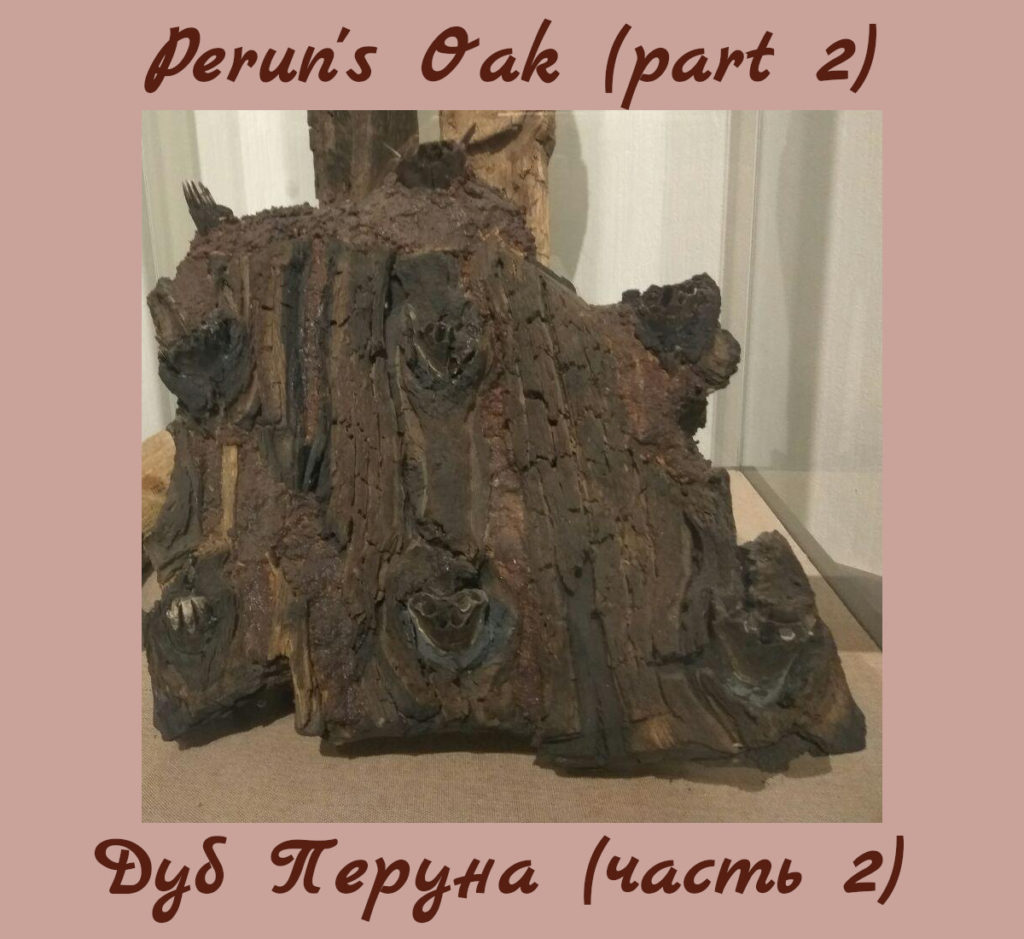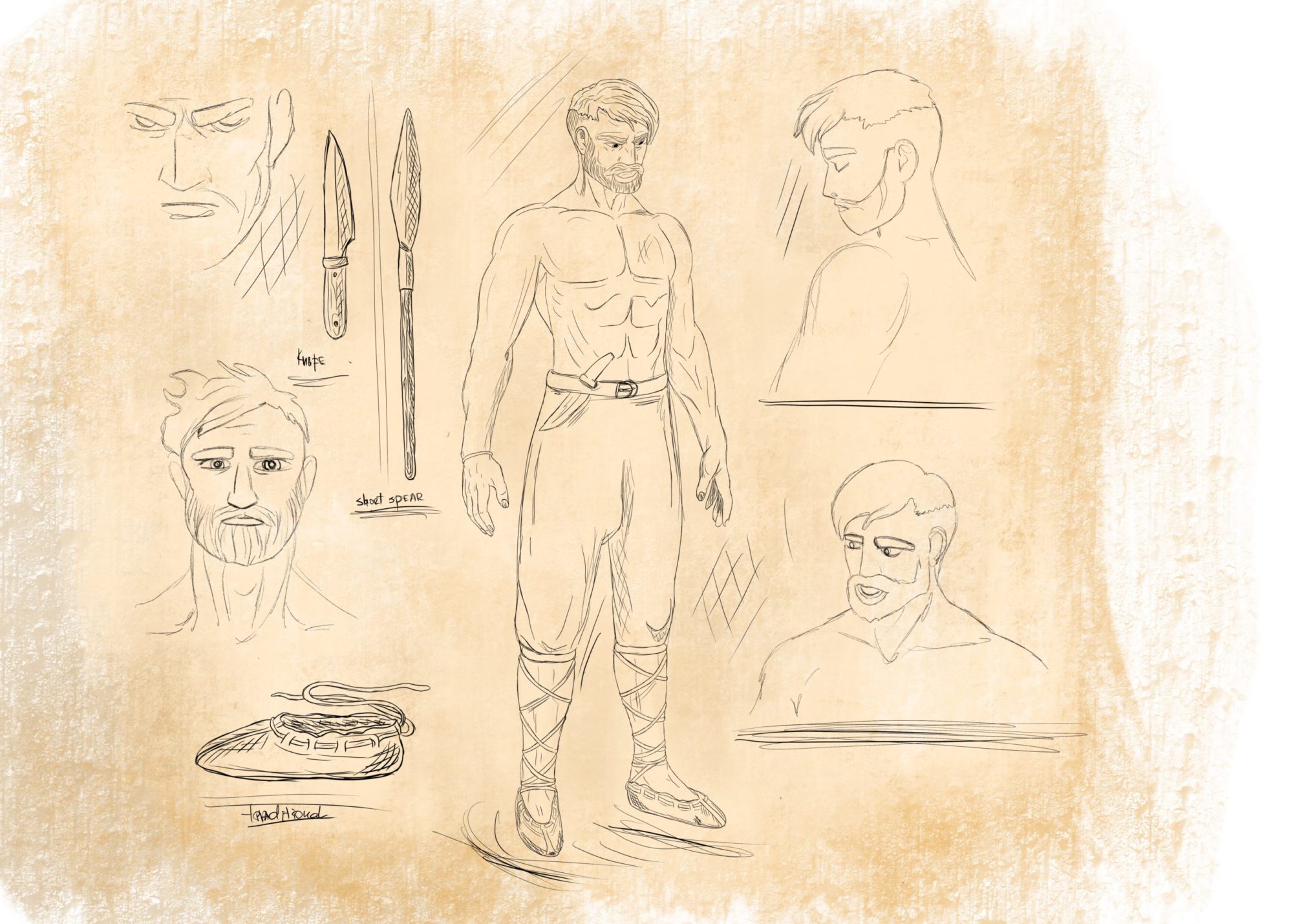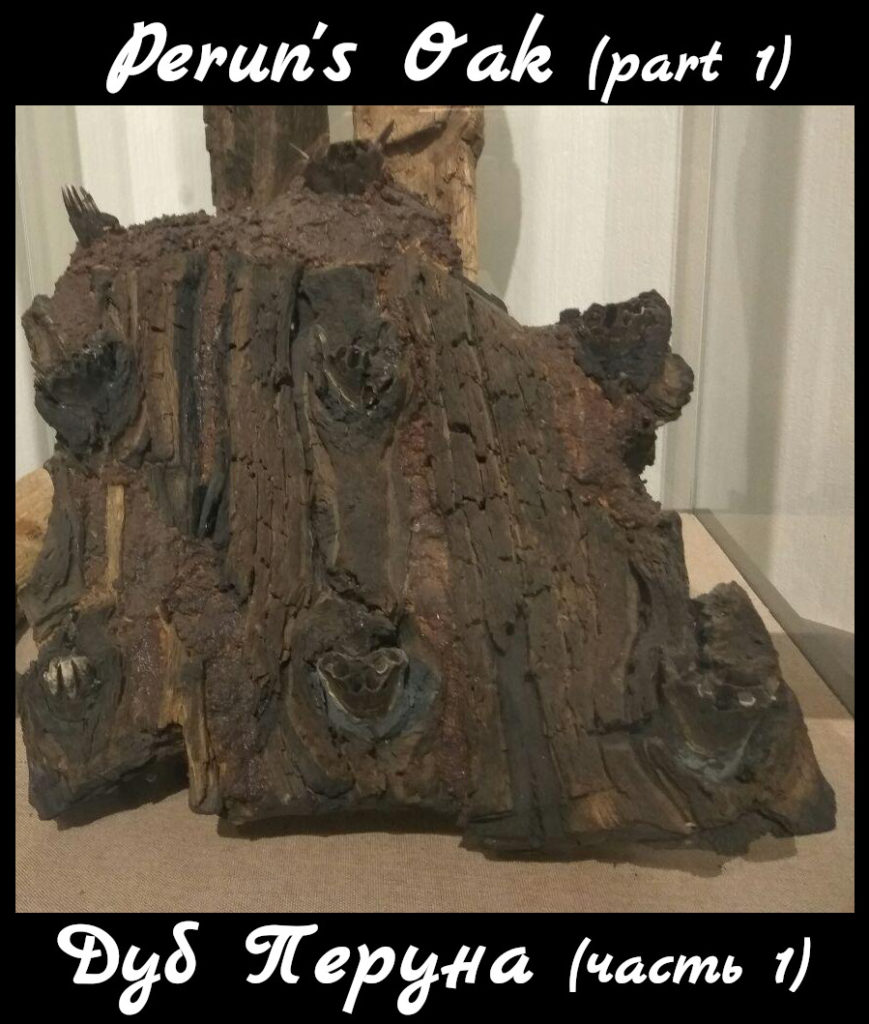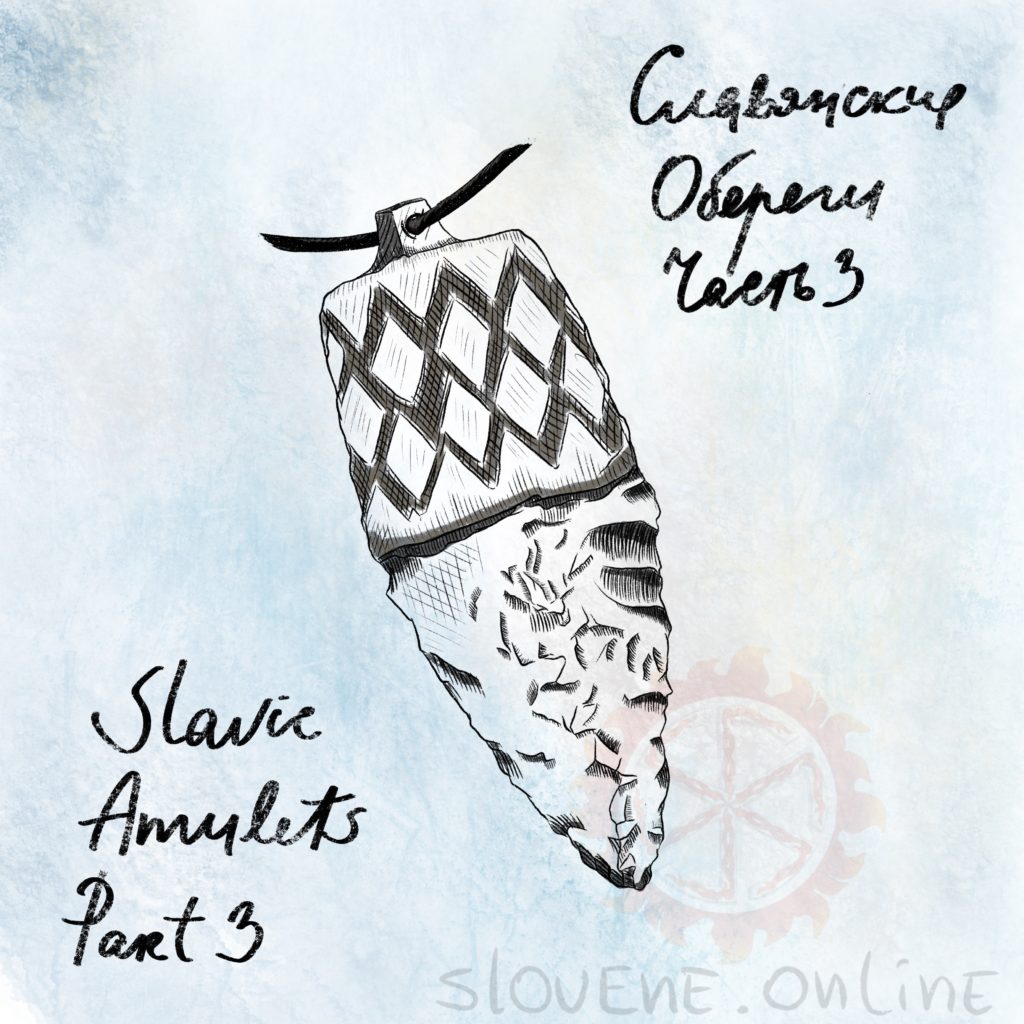Chroniclers of the 12th century talk about the worship of the sacred oaks by the Baltic Slavs in Lubeck and Szczecin. According to the testimony of Cosmas of Prague, the cult of trees in 12th century also remained among the Czech peasants. The gods were worshiped with sacrifices in an oak grove – “the favorite residence of the gods.” The Czech duke Bryachislav was known to be destroying these sacred groves and trees.
ꏍ
The cult of the oak among the Slavs (as well as among the Balts) was associated with the cult of Perun, the god of thunder and lightning. Researchers also point out the common Indo-European nature of the connection between the Thunder God and the Oak – for example, in Ancient Greece and Rome, oaks were dedicated to Zeus and Jupiter, respectively. There is a reference of the “Perun’s Oak” in the letter of the Galician-Volyn duke Lev Danilovich (1302). There is a famous mountain called Perunova Dubrava in Dalmatia. The combination “Perkunas (Perun) Oak” is often found in Baltic sources.
ꏍ
Gustynskaya Chronicle (beginning of the 17th century) describes the customs in Russia on the verge of Christianization (the end of the 10th century). It says that there was an “eternal fire” in the Perun’s shrine, and only oak wood was used for it. Any priest was executed if they neglected the sacred fire.
ꏍ
To be continued…




